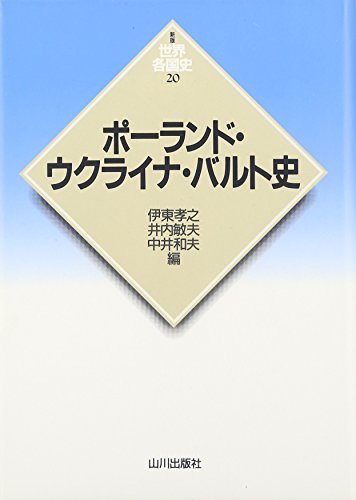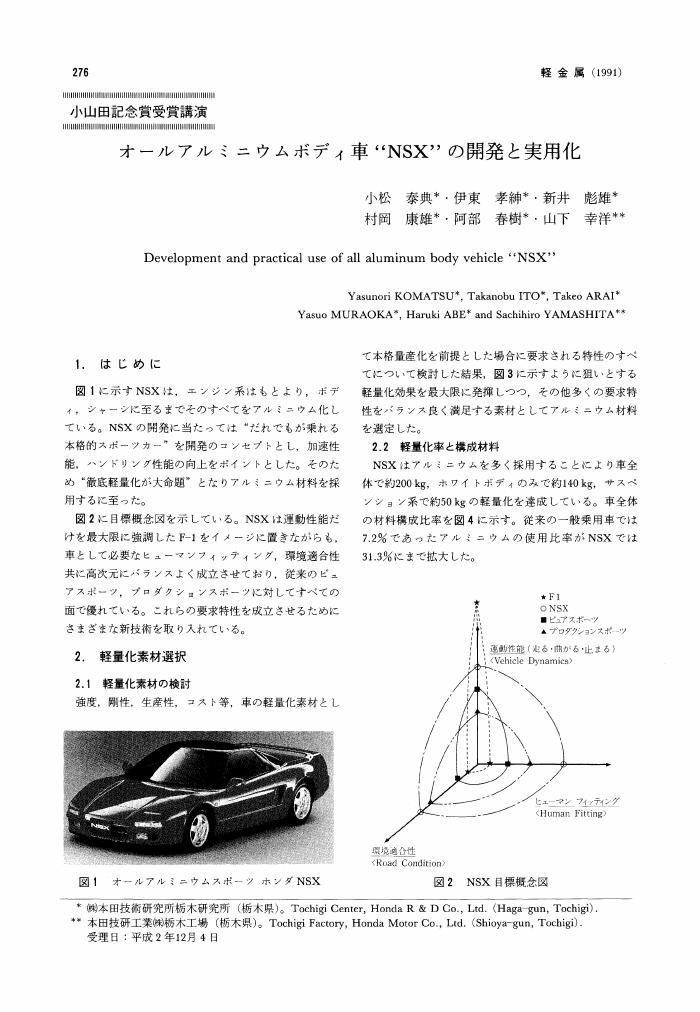近年、「ハードな土木」に対し、土木政策や事業決定のプロセスなど「ソフトな土木」を解明することも土木史の重要な課題と考えられるようになった。本研究は、日本の高度経済成長の牽引役を果たしてきた高速道路に焦点をあて、欧米で普及しているオーラルヒストリーの手法を用いて、1)関係者がご存命のうちに、話を聞き、整理し、資料として後世に残すこと、2)あわせて土木史研究に適用できる方法論を確立することを目的としている。本研究成果の概要は、次の通りである。本研究は、土木学会土木史研究委員会オーラル・ヒストリー研究小委員会がおこなった。1)インタヴューの実施及び証言記録の作成と保管本研究では、4箇年の研究期間をとおして、戦後の道路行政の黎明期を代表する3人の技術官僚にインタヴューを実施し、証言記録の作成と保管をおこなった。(1)平成14〜15年度は、高橋国一郎氏(元建設省事務次官・元日本道路公団総裁):通算7回(2)平成15〜16年度は、井上孝氏(元建設省事務次官・元参議院議員・元国土庁長官):通算6回*井上氏は平成16年5月以降、体調をくずされ、11月に逝去された。今回のオーラルヒストリー・インタヴューが氏の最後のお仕事になった。(3)平成16〜17年度は、山根孟氏(元建設省道路局長・元本州四国連絡橋公団総裁):通算10回2)土木史研究におけるオーラルヒストリー手法の構築3人のインタヴュー対象者へのインタヴューをとおして、オーラルヒストリーの方法論構築に向けての内容蓄積と検討をおこなった。そして最終年度に、5冊の報告書(「実践編」3冊と「理論編」2冊)を作成した。それぞれのインタヴューは、「実践編」として3冊の速記録にまとめた。また蓄積したオーラルヒストリーの方法論を「総括編」とし、ワン・デイ・セミナー(16年度開催)の速記録とともに、2冊の「理論編」としてまとめた。
13 0 0 0 「東ドイツの興亡」星乃治彦--未練学派の東独論
- 著者
- 伊東 孝之
- 出版者
- 現代史研究会
- 雑誌
- 現代史研究 (ISSN:03868869)
- 巻号頁・発行日
- no.37, pp.p54-60, 1991
- 著者
- 金子 直矢 伊東 孝紘 勝田 肇 渡辺 敏暢 岡田 和也 阿部 博 大西 亮吉
- 雑誌
- 研究報告インターネットと運用技術(IOT) (ISSN:21888787)
- 巻号頁・発行日
- vol.2022-IOT-56, no.3, pp.1-8, 2022-02-28
自動車の遠隔運転では,従来運転者が車内で知覚していた車の視覚・聴覚情報を遠隔地にいる運転オペレータに対して安定的に伝送しなければならない.本研究は,移動体通信回線を備えた自動車から遠隔地のオペレータ端末への映像伝送に WebRTC を用いる環境を想定し,通信品質向上への MP-QUIC プロトコルの適用可能性検証を行う.WebRTC は,インターネットにおいて端末・サーバ間で P2P 通信路を確立し通信を行うため,遠隔運転に必要な低遅延な通信を実現できる可能性がある.しかし,移動する自動車からの通信は不安定になることもあり,遠隔運転の安全性を高めるためにより安定した通信方式を確立しなければならない.そこで,本研究では複数の異なる通信回線を利用して通信を行うマルチパス通信プロトコルの一つである MP-QUIC を採用することにより,WebRTC 通信の可用性および品質の向上を試みる.MP-QUIC は,ユーザランドで動作し低遅延なトランスポートプロトコルである QUIC を対象にマルチパス通信技術を導入しており,遠隔運転に必要な通信品質を安定的に提供できる可能性がある.評価では,WebRTC を用いた映像伝送システムに対して MP-QUIC の組み込み,市街地を走行する自動車から複数の移動体通信回線を用いた映像メディアの伝送を実施し,遅延および映像品質の計測を行う.
8 0 0 0 OA 絵地図にみる橋詰広場施設と景観の移り変り
- 著者
- 伊東 孝
- 出版者
- Japan Society of Civil Engineers
- 雑誌
- 日本土木史研究発表会論文集 (ISSN:09134107)
- 巻号頁・発行日
- vol.6, pp.198-207, 1986-06-25 (Released:2010-06-15)
- 参考文献数
- 16
ここ一, 二年, 都市における身近な土木施設として, 橋が注目されている。橋のたもとにとられる, ちょっとした空地「橋詰広場」は, 都市のオープン・スペース, ポケット・パークとしても注目されている。本稿は, かつては賑いの場であり, 交通・情報センターとして機能していた橋詰広場が, どのように変遷して今日に至ってきたのか, について簡単な素描を試みたものである。江戸から今日までの時代を, i) 江戸初期, ii) 江戸後期, iii) 文明開化期, iv) モダニズム期, v) 現代の5期にわけ, それぞれの時代を代表する絵図・写真・地図などを手がかりに橋詰広場施設と景観の変遷を, 日本橋を例にして, 検討している。結論として,i) 時代を経るにしたがって, 橋詰広場は自由な空間ではなくなったこと。言いかえれば。管理されたスペースになってきたこと。ii) 多種多様な機能を有し, 人の賑いの場であった橋詰広場は, 時代の推移と共に, 単一的な機能スペースとなり, 賑いの場ではなくなってきたこと。等を指摘している。
6 0 0 0 ポーランド・ウクライナ・バルト史
- 著者
- 伊東孝之 井内敏夫 中井和夫編
- 出版者
- 山川出版社
- 巻号頁・発行日
- 1998
6 0 0 0 OA 日本における蛍光ランプ普及の背景
- 著者
- 伊東 孝
- 出版者
- 一般社団法人 照明学会
- 雑誌
- 照明学会誌 (ISSN:00192341)
- 巻号頁・発行日
- vol.72, no.5, pp.246-250, 1988-05-01 (Released:2011-07-19)
- 参考文献数
- 3
4 0 0 0 OA 絵地図にみる万世橋と橋詰広場の歴史的変遷
- 著者
- 伊東 孝
- 出版者
- Japan Society of Civil Engineers
- 雑誌
- 日本土木史研究発表会論文集 (ISSN:09134107)
- 巻号頁・発行日
- vol.8, pp.264-273, 1988-06-20 (Released:2010-06-15)
- 参考文献数
- 8
万世橋は、東京の橋の中では、比較的名の通った橋であるところが、万世橋は、萬世橋・万代橋ともかき、読み方は、「まんせいばし」「よろずよばし」ともよむ.「昌平橋」とよばれたこともある。結構複雑である。橋の位置も、いろいろかわったようだ。「万世橋の前身は、江戸時代の筋違橋である」と、一般的にいわれている。しかし本稿では、「万世橋は、明治生まれの橋である」にこだわって、論をすすめている。まず、万世橋の橋名と架橋位置の変遷を文献でしらべ、これの確認をかねて、地図や図版などをもちいた。あわせて、橋詰空間の変遷や建物の状況などについても、言及した。結果は、仮説的ではあるが、万世橋の架橋と橋名の変遷をわかりやすい一覧図として提示した。
4 0 0 0 OA 可動橋一覧と近代橋梁の利活用
- 著者
- 伊東 孝
- 出版者
- Japan Society of Civil Engineers
- 雑誌
- 土木史研究 (ISSN:09167293)
- 巻号頁・発行日
- vol.22, pp.333-339, 2002-05-15 (Released:2010-06-15)
- 参考文献数
- 6
- 著者
- 増田 亜希子 伊東 孝通 和田 麻衣子 日高 らん 古江 増隆
- 出版者
- 日本皮膚科学会西部支部
- 雑誌
- 西日本皮膚科 (ISSN:03869784)
- 巻号頁・発行日
- vol.78, no.4, pp.353-355, 2016-08-01 (Released:2016-12-15)
- 参考文献数
- 8
27 歳,女性。小児期よりアトピー性皮膚炎に罹患していた。初診の 6 年前より夫の精液付着部位に蕁麻疹と瘙痒を認めた。その後,避妊具なしで性交した際に全身に蕁麻疹を認め,呼吸困難も出現した。同様のエピソードが過去 2 回あった。避妊具を使用した性交渉では同様の症状を生じたことはなかった。近医を受診し,精漿アレルギーの疑いで当科を紹介され受診した。10 倍から1000 倍に希釈した夫の精漿を用いたプリックテストでは,検査した全ての濃度で紅斑と膨疹が出現した。本疾患は精漿中に存在する前立腺由来の糖蛋白に対するⅠ型アレルギー反応であると考えられている。精漿アレルギーの患者の半数以上にアトピー性皮膚炎の既往があると報告されており,皮膚バリア機能の障害による経皮感作が発症に重要な役割を担っていることが推察される。本疾患は皮膚科領域での報告は比較的稀であるが,アトピー性皮膚炎関連アレルギー疾患の一つとして位置づけることができると考え報告した。
3 0 0 0 OA 世界戦争100年と東欧 ―二つの忠誠心の間で―
- 著者
- 伊東 孝之
- 出版者
- ロシア・東欧学会
- 雑誌
- ロシア・東欧研究 (ISSN:13486497)
- 巻号頁・発行日
- vol.2015, no.44, pp.5-28, 2015 (Released:2017-08-18)
When World War 1 broke out, most of the nations in Eastern Europe identified themselves with the existing Empires. Poles were mobilized into the three Empires that divided them. They ran the risk of fighting against each other. Germans in the Russian Empire fought in the Russian army against Germany. As the war progressed, however, they became aware of their ethnic identity. They were discriminated against by the authorities or the populace of the ruling nationality. Or they were manipulated by the belligerent nations against the enemy. A lot of new states came into being in Eastern Europe after the war in the name of national self-determination. Most of them, however, were not “ethnic states” in the proper sense of the word. They included many citizens of different ethnicity. On the other hand, as a result of the Russian Revolution a state based on the completely new principle came into being: the Soviet Union. It adopted ethnicity as the constituting principle of the state and formed a federation of ethnic republics. Ethnic republics were, however, just on paper. There were no institutional arrangements that would promote citizens’ allegiance to the given republic. The all-mighty Communist Party of the Soviet Union is the institution that should secure citizens’ allegiance to the federal center. So long as the ideological mobilization worked, they managed to succeed in resurrecting citizens’ civic loyalty to the state as a whole. As the international tension mounted in the course of the 1930s, the Soviet leadership started to look with mistrust on national minorities on the periphery which resulted in the mass murder in Eastern Europe. The famine in 1932–33 in Ukraine was the first case. It was no natural, but man-made disaster to which 3.3 million people fell victim. It was caused by the excessive requisition of grain that the authorities forced through for the ambitious industrialization program. Ukraine had to pay a particularly heavy toll for it. Those who tried to resist were blamed for “Ukrainian nationalism” and “actions to serve the interests of the enemy”. Most of the victims of the so-called “Great Purge” in 1937–38 were citizens of national minorities in Eastern Europe. They were suspected to be spies for Japan in the case of the “Kulak operation” and for Poland in the case of the “Polish operation”. 625,000 people were incriminated and shot to death. During World War 2 Germans and Soviets did ethnic cleansing in a huge scale in Eastern Europe. Germans considered Eastern Europe as nothing more than suppliers of raw materials, foods and labor forces, and were not interested in integrating peoples there. They starved to death about one million inhabitants of Leningrad and 3.1 million soldiers of the Red Army most of whom were conscripted from Eastern Europe. 5.4 million East European Jews fell victim to the German extermination policy after July 1941. Soviets, on the contrary, were interested in integrating peoples they captured. However, they shot to death most of the elite who cooperated with the previous regime and exiled “enemy nationalities” en masse to Central Asia or Siberia. Beneath the German-Soviet war another ethnic cleansing unfolded: Ukrainian nationalists killed about one hundred thousand Poles and Jews in Volynia. (View PDF for the rest of the abstract.)
3 0 0 0 OA 皮膚悪性腫瘍ガイドライン第3版 メラノーマ診療ガイドライン2019
- 著者
- 公益社団法人日本皮膚科学会 一般社団法人日本皮膚悪性腫瘍学会 皮膚悪性腫瘍診療ガイドライン改訂委員会(メラノーマ診療ガイドライングループ) 中村 泰大 浅井 純 井垣 浩 猪爪 隆史 並川 健二郎 林 礼人 福島 聡 藤村 卓 伊東 孝通 今福 惠輔 田中 亮多 寺本 由紀子 皆川 茜 宮川 卓也 宮下 梓 和田 誠 古賀 弘志 菅谷 誠
- 出版者
- 公益社団法人 日本皮膚科学会
- 雑誌
- 日本皮膚科学会雑誌 (ISSN:0021499X)
- 巻号頁・発行日
- vol.129, no.9, pp.1759-1843, 2019-08-20 (Released:2019-08-21)
- 参考文献数
- 294
- 被引用文献数
- 2
2 0 0 0 OA 東京奥多摩町・青梅街道の昭和前期における橋梁の進展に関する研究
- 著者
- 紅林 章央 前田 研一 伊東 孝
- 出版者
- Japan Society of Civil Engineers
- 雑誌
- 土木史研究論文集 (ISSN:13495712)
- 巻号頁・発行日
- vol.25, pp.99-116, 2006-06-15 (Released:2010-06-04)
- 参考文献数
- 16
This study is made for demonstrating the construction projects about bridges on Ome-Street in Okutama Town in Tokyo. These can be classified into three periods. In the first period, from 4 to 10 years in Showa Era, the Civil Department of Tokyo Prefecture made the street wide. In the second, from 12 to 13 years in Showa Era, the waterworks bureau of Tokyo City built the street to transport the construction materials of the Ogouchi-Dam. In the third, from 31 to 32 years in Showa Era, the waterworks bureau of Tokyo Prefecture built the street in the areas which were under water by building the Ogouchi-Dam. In the first, six long-span bridges were all different, and short-span bridges were rainforced concrete arch bridges. In the second, three bridges were designed by Masayosi Kabashima, Jun Masuda, Katsutake Naruse, famous technicians of bridges. In the third, five arch bridges designed by Katsutake Naruse and Samon Honma were all different.
2 0 0 0 OA わが国における第二次世界大戦以前のコンクリートアーチ道路橋の変遷
- 著者
- 紅林 章央 前田 研一 伊東 孝
- 出版者
- Japan Society of Civil Engineers
- 雑誌
- 土木史研究論文集 (ISSN:13495712)
- 巻号頁・発行日
- vol.24, pp.75-94, 2005-05-15 (Released:2010-06-04)
- 参考文献数
- 63
- 被引用文献数
- 1
In this study, the authors listed the concrete arch highway bridges that were built in Japan before World War II. And we classified them into the three types of arch bridges, single span, multi span deck types and through type, in addition, arranged chronologically and classified them into the areas, the structures, the designs and the designers. Next we analyzed characteristics of ages, areas, structures and designs of them. Based on this study, we found that those were built in Nagasaki, Kobe, Kyoto and Tokyo City in Meiji Era at first, Aichi and Ehime in Taisho Era, and next, those had made rapid progress though Reconstruction Program in Tokyo after Kanto-Earthquake and Urban Planning in Osaka City, and after that, the techniques of building spread in Kanto and Tohoku. And we made clear that most of spandrel-filled arch bridges were built below about 30m, and about 40 Melan-arches were built, and arch-rib structure as many as arch-ring structure were built, almost arches were built the fixed arch, most arcade-structure of arch-spandrel had been built for 10 years since 1927, and fixed arch-spandrel pediment changed to pasting stones then changed to concrete walls.
- 著者
- 金子 直矢 伊東 孝紘 渡辺 敏暢 阿部 博 大西 亮吉
- 雑誌
- マルチメディア,分散協調とモバイルシンポジウム2021論文集
- 巻号頁・発行日
- vol.2021, no.1, pp.1059-1067, 2021-06-23
本研究では,WebRTC を用いたアプリケーションにおいてマルチメディア伝送の可用性と柔軟性を向上するためにマルチパス技術を導入し,メディアストリームごとのポリシに基づき通信パスの利用形態を制御する手法を提案する.WebRTC を用いたアプリケーションとして車両やロボットの遠隔操作システ ムといった事例が存在する.遠隔操作システムは,操作に必要な環境情報を伝えるために複数のカメラや マイクを併用しており,操作者のニーズに応じて必要なメディアストリームを安定的に伝送する通信基盤 が重要である.そこで WebRTC を用いる遠隔車両運転システムをターゲットとして,以下の 3 手法を導入し組み合わせることを提案する.(1) IP ToS 値を用いたメディアストリームの識別による Web ブラウザとネットワーク制御の連携 (2) マルチパス通信技術の導入による通信の選択肢多様化 (3) 優先度・重要度 に基づくメディアストリームごとのパス利用形態制御.これらの手法を,遠隔車両運転システムが用いるモバイル通信サービスを利用して検証し,実現性と通信制御の柔軟性の向上に寄与することを示した.
2 0 0 0 OA 琵琶湖疏水蹴上インクライン石垣の解体調査と復元方法
- 著者
- 伊東 孝 鄭 雄男
- 出版者
- Japan Society of Civil Engineers
- 雑誌
- 土木史研究 (ISSN:09167293)
- 巻号頁・発行日
- vol.20, pp.279-287, 2000-05-01 (Released:2010-06-15)
京都地下鉄棄西線の蹴上駅を建設するため、蹴上インクラインの一部を利用して竪坑が掘られた。蹴上インクラインが京都市の史跡に指定されているため、市は復元を条件に用地の使用を許可した。本論文は、蹴上インクライン石垣の解体前および解体時の調査内容を記すとともに、どのような方針と考え方で石垣を復元したのかについて報告している。解体調査から、以下のようなことが判明した。石材は花崗岩で、雑石状ないしは間知石状の形状である。石は大振りで、今日使用されている標準的な石材とくらべると、2~3倍もある。裏込め石も同様で、3倍ぐらいの量が充填されていた。石積みの基礎には、意外なことに松丸太がなく、地盤のやわらかいところに胴木が2本確認されただけである。石垣の復元は、当初、オリジナルと同様、空積みを提案したが、落石の恐れのない「練り積み」を基本とする「空積み風」で復元された。
2 0 0 0 OA シカゴの可動橋
- 著者
- 伊東 孝
- 出版者
- Japan Society of Civil Engineers
- 雑誌
- 土木史研究 (ISSN:09167293)
- 巻号頁・発行日
- vol.14, pp.219-229, 1994-06-09 (Released:2010-06-15)
- 参考文献数
- 15
1940 (昭和15) 年に竣工した勝閧橋は、東洋一の可動橋といわれた。橋桁がハの字に開く双葉の可動橋は、わが国でははじめてのタイプであり、シカゴ・タイプの可動橋ともいわれた。シカゴ市での現地調査とヒアリングおよび文献などから次のことが判明した。(1) シカゴ市の管理橋だけでも50の可動橋が存在し、そのうち30橋が稼動している。このほか鉄道橋の可動橋もある。かつては舟運交通のために橋を開閉していたが、現在では春と秋にミシガン湖に出入りするレジャー用のヨットのために橋を動かしている。(2) 可動橋の発展は、4期にわけられる。重要なのは、二期の都市美運動に端を発する検討時期である。可動橋のデザインと装飾は、シカゴ・プランにもかかわったE. H. ベネットが中心になってまとめ、モデルはパリのネオ・バロック様式にあった。
2 0 0 0 OA オールアルミニウムボディ車“NSX”の開発と実用化
1 0 0 0 OA 明治期における東京の鉄製道路橋と技術者群像
- 著者
- 伊東 孝
- 出版者
- Japan Society of Civil Engineers
- 雑誌
- 土木史研究論文集 (ISSN:13495712)
- 巻号頁・発行日
- vol.25, pp.27-39, 2006-06-15 (Released:2010-08-24)
- 参考文献数
- 57
Concerning the main bridges of the Meiji Era Tokyo, the bridge data, such as bridge length, width and type were known so far, but the bridge designers (especially the middle period of the Meiji Era) are not known unexpectedly. This paper mainly clarify the personal history of Yoshitsugu KURATA, an engineer of Tokyo Prefecure and Hikosaburo KANAI Tokyo City engineer and also the bridges designed by them.KURATA designed the Azuma bridge, the first long iron bridge which crossed the Sumida river and after that he did the Umaya and Eitai bridges as the principal engineer. But he was not well known. Why? This time I understood that he died three years later after the completion of the Eitai bridge.I also make clear the following.1. KANAI designed the most main bridges in Tokyo in the middle and late period of the Meiji Era.2. Especially he learned an arch theory by self-education and it is KANAI that designed the arch bridges which harmonized with a townscape and were built willingly in those days.
1 0 0 0 OA 東欧の民族問題とマルクス主義の民族自決権概念 : ローザ・ルクセンブルク
- 著者
- 伊東 孝之
- 出版者
- 北海道大学スラブ研究センター
- 雑誌
- スラヴ研究 (ISSN:05626579)
- 巻号頁・発行日
- vol.18, pp.53-96, 1973
1 0 0 0 OA 高能率MOS FETを使用した全固体化50kWテレビジョン放送機
- 著者
- 田村 信一 伊東 孝司 林 直樹 福岡 宣重 長尾 秀樹 加藤 孝男
- 出版者
- 一般社団法人 映像情報メディア学会
- 雑誌
- テレビジョン学会技術報告 (ISSN:03864227)
- 巻号頁・発行日
- vol.13, no.10, pp.7-12, 1989-02-23 (Released:2017-10-06)





